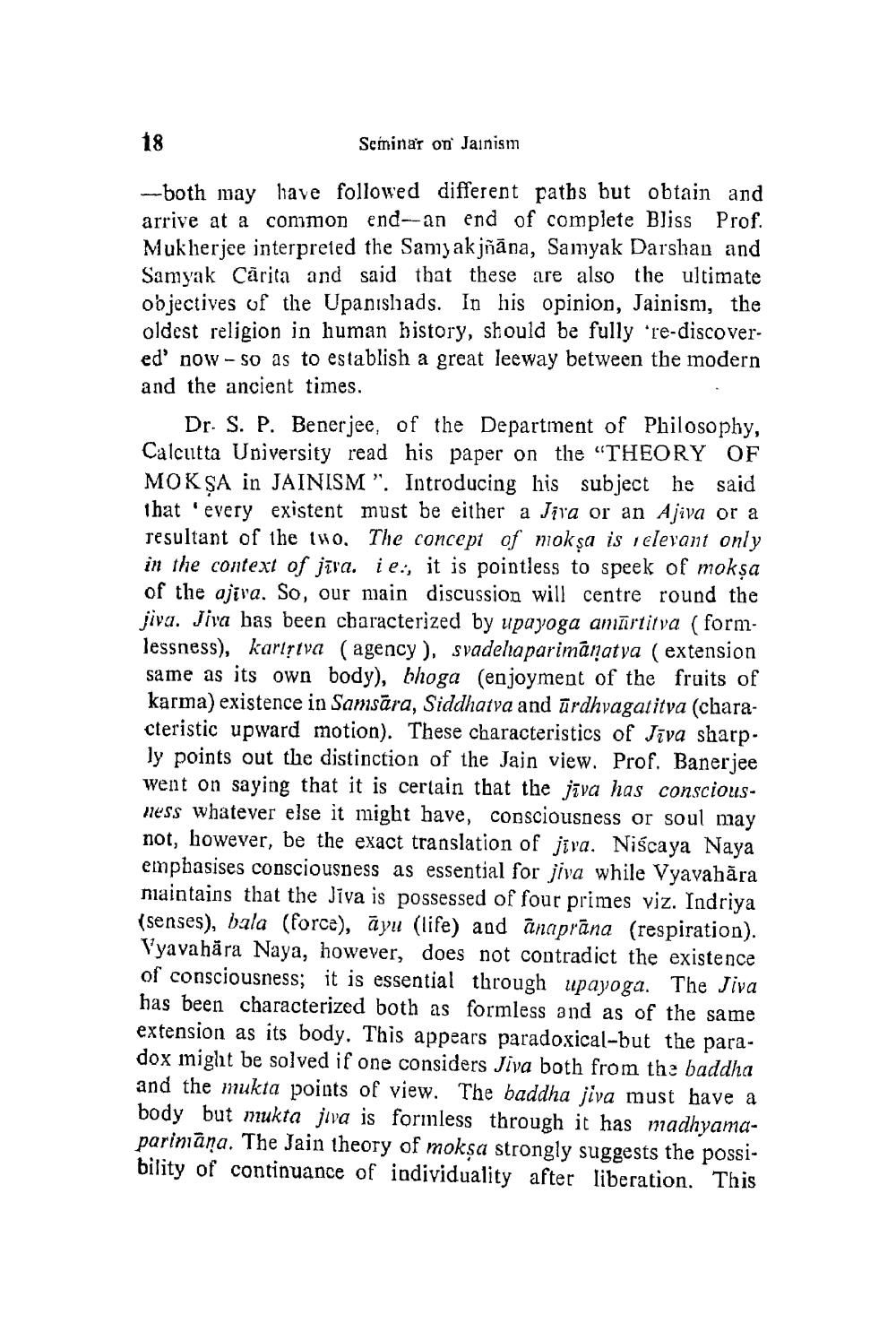________________
Seminar on Jainism
- both may have followed different paths but obtain and arrive at a common end- an end of complete Bliss Prof. Mukherjee interpreted the Samyak jñāna, Samyak Darshan and Samyak Càrita and said that these are also the ultimate objectives of the Upanishads. In his opinion, Jainisni, the oldest religion in human history, should be fully 're-discovered' now - so as to establish a great leeway between the modern and the ancient times.
Dr. S. P. Benerjee, of the Department of Philosophy, Calcutta University read his paper on the “THEORY OF MOKSA in JAINISM”. Introducing his subject he said that 'every existent must be either a Jiva or an Ajiva or a resultant of the two. The concept of mokşa is relevant only in the context of jīva. ie:, it is pointless to speek of mokşa of the ajiva. So, our main discussion will centre round the jiva. Jiva has been characterized by upayoga amrtitva (formlessness), karlstva (agency), svadeha parimanatya (extension same as its own body), bhoga (enjoyment of the fruits of karma) existence in Samsāra, Siddhatva and ürdhvagatitva (characteristic upward motion). These characteristics of Jīva sharply points out the distinction of the Jain view. Prof. Banerjee went on saying that it is certain that the jīva has consciousness whatever else it might have, consciousness or soul may not, however, be the exact translation of jiva. Niscaya Naya emphasises consciousness as essential for jiva while Vyavahāra maintains that the Jiva is possessed of four primes viz. Indriya (senses), bala (force), āyu (life) and anaprāna (respiration). Vyavahåra Naya, however, does not contradict the existence of consciousness; it is essential through upayoga. The Jiva has been characterized both as formless and as of the same extension as its body. This appears paradoxical-but the paradox might be solved if one considers Jiva both from the baddha and the mukta points of view. The baddha jiva must have a body but mukta jiva is formless through it has madhyamapariniana. The Jain theory of moksa strongly suggests the possibility of continuance of individuality after liberation. This




